How to Spot and Handle Floral Plant Diseases
Have you found your flowers’ petals dappled with brown or grey lately? Wondered why they’re drooping all of a sudden? Nothing is worse than arranging a gorgeous flower bed, only for your petals to spot and wilt–except, perhaps, trying to fix the problem. Who wants to care for a bunch of lifeless-looking plants when you could easily unearth them and replant some fresh ones? Yet, the old adage out with the old and in with the new doesn’t quite work in this case. If your flowers are showing signs of spotting, wilting, or what appears to be mold then you might be dealing with a plant disease. Don’t worry. In this article, we’ll explain how to spot and handle floral plant diseases.
Know Thine Enemy
It’s a good idea to verse yourself in the various types of diseases so you can spot the signs and learn how to handle floral plant diseases. The following is a list of common floral plant diseases and what they look like:
Gray Mold
This disease doesn’t just affect florals; it can affect other plants too. You’ll find gray mold on a plant’s most vulnerable areas, such as buds, seedlings, and recent cutting sites. As for its appearance, gray mold looks exactly as it sounds. You’ll find gray, fuzzy spores on the plant, which can spread from the infected area to healthier tissue.
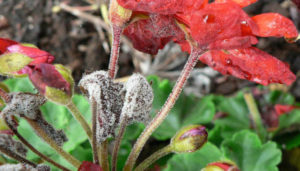
Symptoms of gray mold include damping-off (or bed rot), flower and leaf blights, bud rot, and stem canker.
Damping-off occurs either in high humidity or when soil is contaminated with fungus. It can prevent seeds from germinating and cause wilting in young seedlings. Plants most susceptible to this symptom include:
- Pansies
- Petunias
- Cinerarias
- Cyclamens
- Exacums
- Snapdragons
Leaf and flower blights often occur when leaves and petals come into contact with a plant’s infected areas. You’ll know if your plants are suffering from blight if you find water-soaked spots that appear brown, gray, or tan. If blight spreads, it can also cause the tips of leaves to burn. When buds are infected, which is called bud rot, they will fail to open. Some plants susceptible to these symptoms include:
- Begonias
- Carnations
- Chrysanthemums
- Cyclamens
- Geraniums
- Impatiens
- Marigolds
- Petunias
Stem canker occurs when gray mold infects a flower or leaf at its base (where it attaches to the stem), infiltrating the stem and causing it to sink inward. The plants most susceptible to this symptom include:
- Roses
- Snapdragons
- Geraniums
Often, gray mold can be avoided entirely if good sanitation practices are employed. You can find steps for preventing gray mold (and the following flower diseases) near the end of the article.
Powdery Mildew
Powdery mildew is another common plant disease. White powder will appear on plant leaves, or in severe cases, on stems and flowers. When plants are infected, their leaves will turn from green to yellow to brown. For those whose flower gardens are a source of pride, powdery mildew is something you’ll want to take care of. It is not, however, fatal to plants. So if you don’t particularly care if your flowers have lost their blush or verdant hue, you can skip ahead to the next disease.
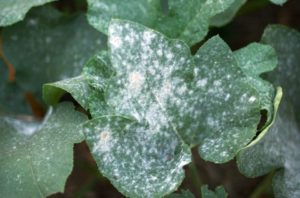
Flowers susceptible to powdery mildew include:
- Zinnias
- Snapdragons
- Verbenas
- Delphiniums
- Lungwort
- Bee Balm
- Garden Phlox
Black Spot
Black spot is a fungal disease that affects leaf surfaces. Similar to blight, it appears as dark circles on plants’ leaves. After infection, the leaf will turn yellow and then fall off. Roses are the most susceptible to this disease.
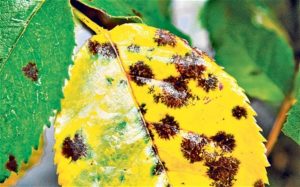
Black spot thrives in humid, rainy weather; hot weather; and cool, damp weather.
Rust
This is a disease you’ll surely be able to spot. Rust disease is the blemish on the face of plant diseases. Quite literally. Rust disease appears as pustules on plant leaves, which are often orange or rusty colored. It often looks like the warty skin of a toad, but these spots can appear as large rusty circles, too.
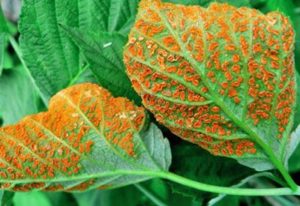
This disease thrives in humidity and affects the following flowers:
- Roses
- Snapdragons
- Hollyhocks
- Daylilies
Pythium
Pythium is a form of root rot in which roots decay and become discolored. It also stunts plant growth, causing plants to wilt and die. The fungus-like organism is commonly found in soil, sand, pond and stream water, sediment, and dead roots, and it is most detrimental to herbaceous crops.
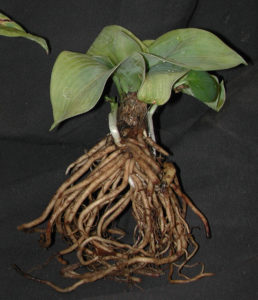
Because this disease is so difficult to treat, prevention is key. (You can learn more about how this disease affects plants here.)
Foliar Nematode
Foliar nematodes are parasites found within leaves and buds. They will attach to plants’ stems or leaves, hatching eggs. Then, the hatched nematodes will feed on plants, damaging plant tissue and forming leaf blotches. As a result, plants will turn from yellow to brown.
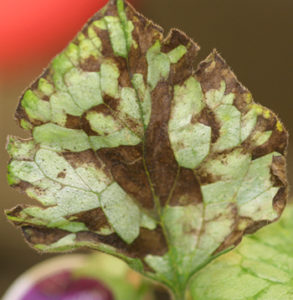
As these parasites are impossible to eradicate, it is vital to prevent their migration onto plants.
Preventing Floral Plant Diseases
Every one of these plant diseases can be prevented by following the below steps:
- Ensure that flowers are planted evenly and spaced apart so they do not make leaf-to-leaf contact. This will prevent the spread of disease, reduce humidity, and stimulate air flow.
- Prune between plants or flowers to make sure there is enough space and air flow.
- Never water from overhead. Wet leaves and flowers will encourage the growth of bacteria. Always water from below the plant near the soil.
- If possible, keep humidity below 85% (applicable to greenhouses and other controlled environments).
- (Especially for Pythium) Ensure that you keep a sanitary garden and work space. Only use clean tools, pots, and flats. Never walk on mixes or dump mixes onto dirty floors.
- Discard infected leaves and plant materials.
- Don’t keep infected plants near your healthy plants (such as in a compost pile, a trashcan, etc).
- Weed regularly.
Preventing Floral Plant Diseases During the Winter
While plant diseases are most common during mid to late summer, it’s important to practice good crop maintenance in the winter to ensure your plants stay healthy. Cold weather doesn’t kill (most) plant pathogens, so don’t think that leaving these diseases for Father Winter will cure your plants. Instead, follow these tips:
- Remove any infected leaves or plants from your garden. In the fall and winter, you might find dark spots in leaf piles. Make sure you dispose of those leaves. Do not use them as compost!
- Check on your plants’ health, even if it’s cold. If you see an infected plant, don’t leave it and hope the cold kills it off. Pluck off the infected leaves or flowers. If the entire plant looks infected, unearth it.
- Prune your roses.
If your flowers happen to become infected and the above methods don’t work, try one of the fungicides listed on this chart.
Sources:
Botrytis Gray Mold in Greenhouse Floral Crops



